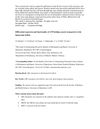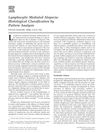Search
forLearn
5 / 18 resultslearn Stem Cell Factor
learn Beta Polypeptide
learn Osteopontin
signaling protein that, when suppressed, may grow hair by reducing inflammation and stem cell loss
learn Microneedling
technique to create small wounds in skin to activate collagen production and hair growth
Research
5 / 1000+ results
research Differential Expression and Functionality of ATP-Binding Cassette Transporters in the Human Hair Follicle
Certain transporters are found in human hair follicles and may affect hair growth and loss.

research Faculty Opinions Recommendation of Bald Scalp in Men With Androgenetic Alopecia Retains Hair Follicle Stem Cells but Lacks CD200-Rich and CD34-Positive Hair Follicle Progenitor Cells
Bald men with male pattern baldness still have hair stem cells, but lack certain cells needed for hair growth.

research Faculty Opinions Recommendation of Bald Scalp in Men With Androgenetic Alopecia Retains Hair Follicle Stem Cells but Lacks CD200-Rich and CD34-Positive Hair Follicle Progenitor Cells
Bald men with male pattern baldness still have hair stem cells, but lack certain cells needed for hair growth.

research Faculty Opinions Recommendation of Bald Scalp in Men With Androgenetic Alopecia Retains Hair Follicle Stem Cells but Lacks CD200-Rich and CD34-Positive Hair Follicle Progenitor Cells
Bald men with male pattern baldness still have hair stem cells, but lack certain cells needed to grow hair.

research Lymphocytic Mediated Alopecia: Histological Classification by Pattern Analysis
Steven Kossard classified lymphocyte-related hair loss into four patterns, each linked to different types of baldness.
Community Join
5 / 523 resultscommunity New and Interesting HairLoss Studies/Papers/Reviews
Hair loss treatments discussed include Dutasteride with Ketoconazole, tissue engineering strategies, and androgenetic alopecia therapies. Massage doubles follicular retention, improving treatment effectiveness.
community DHT Harms Scalp Microbiome: DHT Itch is REAL
Increased Malassezia and Cutibacterium in the scalp microbiome are linked to higher sebum production and inflammation in androgenetic alopecia (AGA). Treatments include ciclopirox shampoo, benzoyl peroxide shampoo, clobetasol propionate, calcipotriol, minoxidil, finasteride, and dutasteride.

community Compressed part of research of theory of androgenic/anabolitic balance. AGA h-responders analytic. Theory of physio-metabolitic method of anti AGA treatment
The treatment for androgenetic alopecia involves using finasteride and minoxidil with intense exercise and cold exposure to boost metabolism and reduce androgenic effects, potentially leading to hair regrowth. This approach may activate biological pathways for improved hair and overall health.

community If You Have DUPA, PLEASE READ THIS: Everyone Should Be Scalp Biopsied
Scalp biopsies are crucial for diagnosing hair loss conditions like Diffuse Unpatterned Alopecia (DUPA) and retrograde hair loss, as treatments like finasteride and dutasteride may not be effective if other conditions are present. Combining PPAR-GAMMA agonists with retinoids could improve treatments for conditions like Lichen Planopilaris.
community It's sad how many guys shave because they don't know
Finasteride and dutasteride can prevent hair loss if used early, but they may cause side effects. Many men shave their heads because they are unaware of these treatments or avoid them due to side effects or cost.